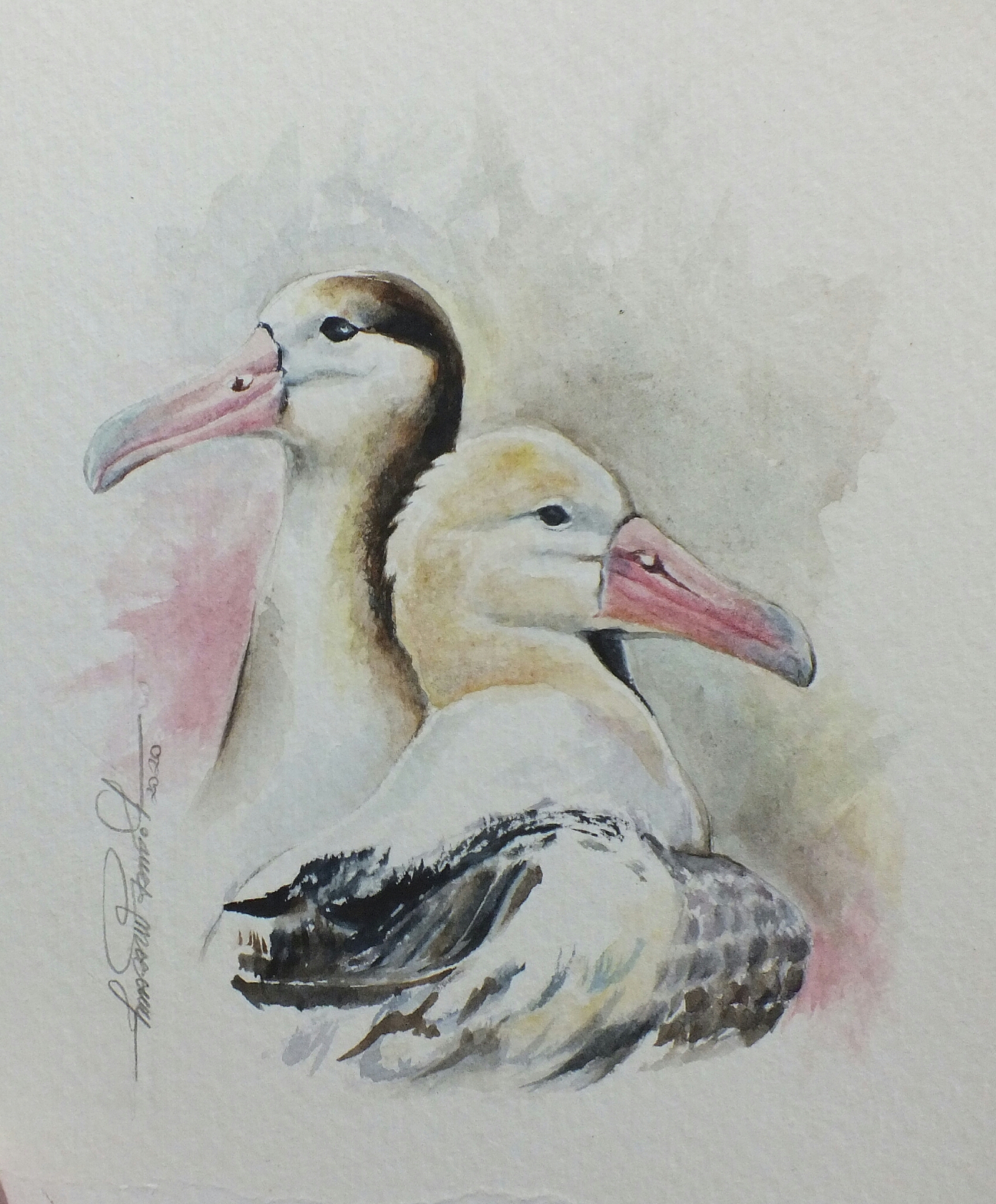
A Short-tailed Albatross pair, artwork for ACAP by Lucimara Wesolowicz of ABUN; after a photograph by Laurie Smaglick Johnson
Thomas Good (Northwest Fisheries Science Center, Seattle, Washington, USA) and colleagues model bycatch of the globally Vulnerable Short-tailed Albatross Diomedea albatrus in the journal Fisheries Research.
The paper’s abstract follows:
“Developing unbiased estimates of incidental bycatch poses a challenge for species where fishing-induced mortality is a rare occurrence. Expanding rare mortality events using ratio estimators or bycatch of proxy species can result in highly variable estimates based on untested and often untestable assumptions. We estimated short-tailed albatross bycatch in a U.S. West Coast groundfish fishery using Bayesian time series modeling. The best model used a constant bycatch rate and inferred annual expected bycatch and variability using a Poisson distribution, given specified levels of observed effort. Fleet-wide bycatch estimates varied annually and peaked at 1.35 birds in 2011 (the year of the only observed mortality). The probability of exceeding the limit of five estimated takes in a 2-year period was very low throughout the time series, and estimated takes in the unobserved portion of the fleet are more likely with lower observer coverage and higher fishing effort. The Bayesian model-based approach avoids assumptions inherent in ratio estimators and proxy methods; it incorporates uncertainty, reduces volatility, and enables comparisons of bycatch estimates to management thresholds. This analytical approach offers natural resource managers a framework for estimating bycatch in data-limited contexts, which can result in better guidance for management actions and mitigation strategies.”
Reference:
Good, T.P., Jannot, J.E., Somers, K.A. & Ward, E.J. 2022. Using Bayesian time series models to estimate bycatch of an endangered albatross. Fisheries Research 256: 106492.
John Cooper, ACAP News Correspondent, 29 September 2022

 English
English  Français
Français  Español
Español